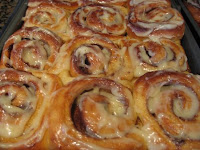Frugality is one of the most beautiful and joyful words in the English language, and yet one that we are culturally cut off from understanding and enjoying. The consumption society has made us feel that happiness lies in having things, and has failed to teach us the happiness of not having things.
- Elise Boulding
The Wall Street Journal noted a study last fall pegging the ideal salary as $75,000. Make less and you are increasingly anxious about covering expenses. Make more and you’re apparently still increasingly anxious about… something. The article spawned a flurry of comments, arguing that $75K won’t buy in Manhattan what it buys in North Dakota (true), with one poster arguing that $500K is the absolute minimum income for a decent life in Manhattan (seriously?).
The point behind the study, at least to my view, is less about bickering over geographic buying power. It is more the underlying point that once necessities are covered, more money essentially makes people less happy. But why? One perhaps obvious solution is that higher salaries usually demand longer hours for employees, leaving less time for families, days at the beach, puttering in the basement with LGB model trains. The more subtle moral is that of relativity. Rich people do not consider themselves rich, because they look at those richer than themselves and feel they have not yet “made” it. A miserable employee is one who earned a solid bonus - but then learned that his neighbor received twice as much.
With more income in American society also comes a self-imposed (and often subconscious) burden to live up to the “expectations” of that income bracket. Your neighbors have pools so you need a pool. Your friends enjoy lavish vacations, so you feel you must do the same. Voluntary expenses become necessary, and pile up continuously until you can’t imagine living at a lower income than you currently make. And in that moment you are trapped, mentally handcuffed to your job and current income level.
But if the rich don’t feel rich, who is rich? Obama defines it as $250K, but the issue again is not the amount of money itself, but our tendency to view people making more than whatever we make as “those rich people.” A separate class of mysterious people we envision hording money (or swimming in gold, like Scrooge McDuck) and having elite foie gras and cracker parties in manicured, private lawns. Yes, there are some truly very wealthy people out there – but there are also truly wealthy generous people as well. Money is simply a necessary function of buying goods; it is no more an indicator or moral capital (or dissolution) than hair color or shoe size. With money comes a great responsibility to use it wisely, but the wealthy should no more be seen as evil hoarders than the financially struggling should be seen as unproductive squander-ers. Politicians love to bait us against one another, but we cannot let money define battle lines of the next War Between the States: “us” against “them.”
What responsibility does money bring at any income level (not just for "those rich" types)? Perhaps John Wesley says it best: Make all you can. Save all you can. Give all you can.

